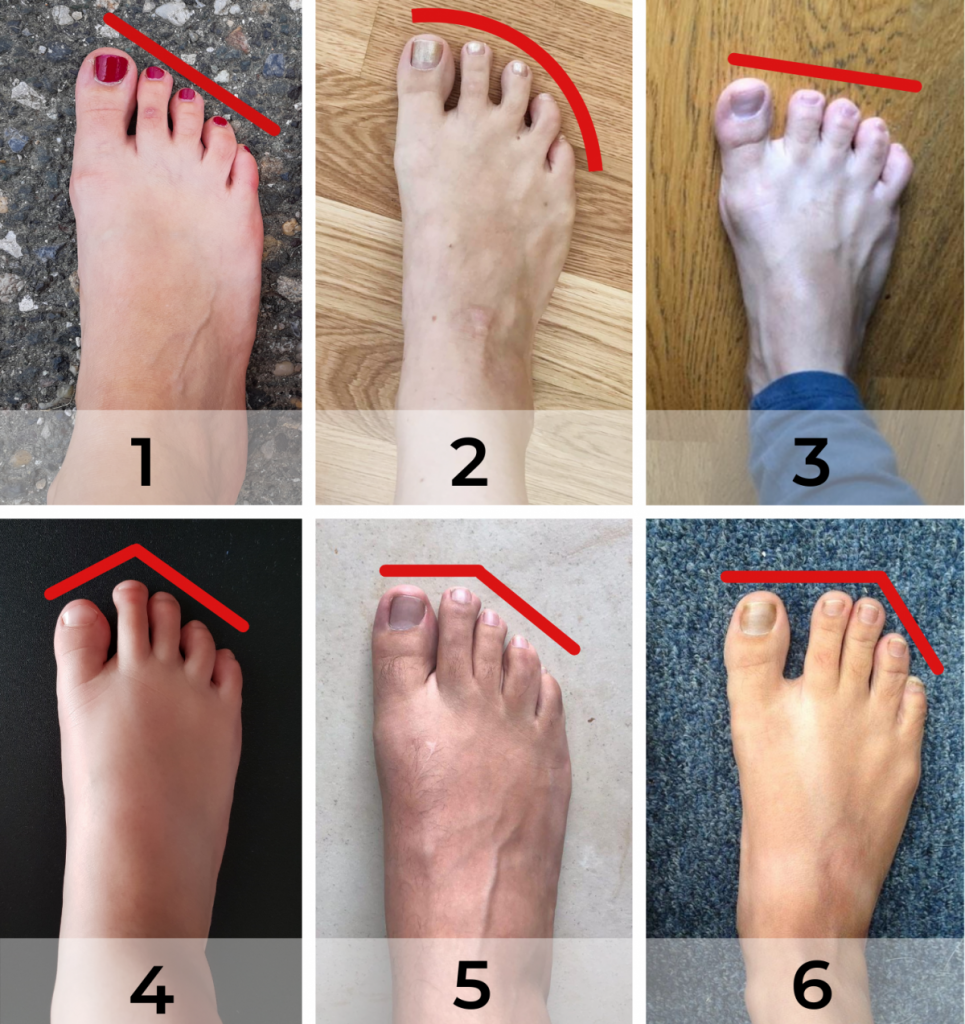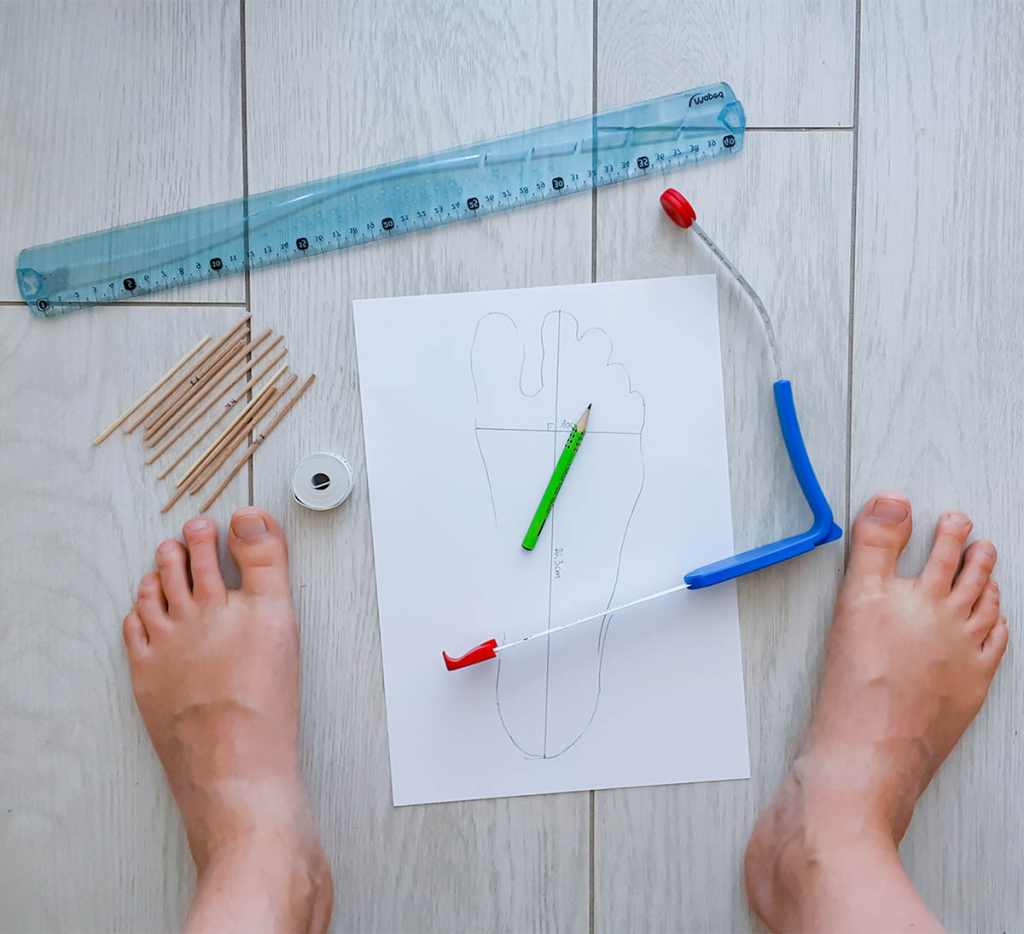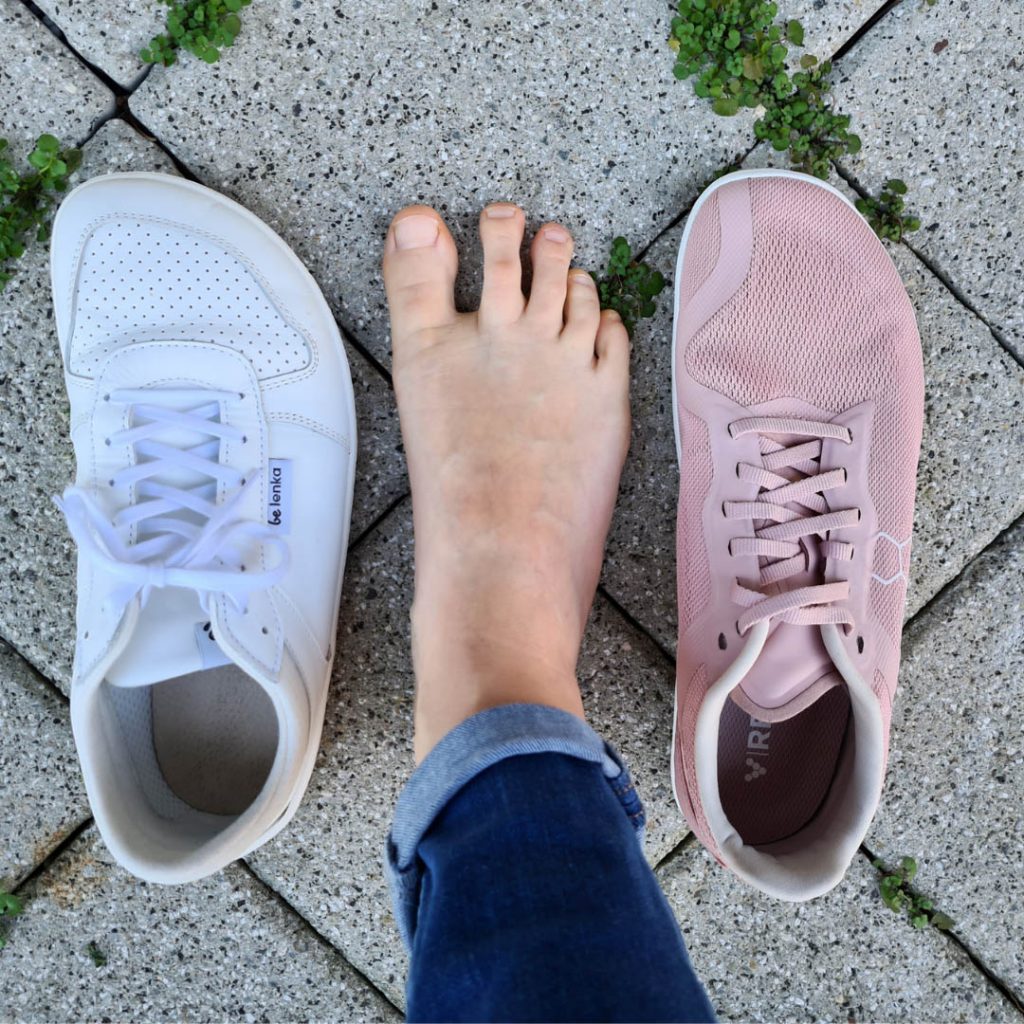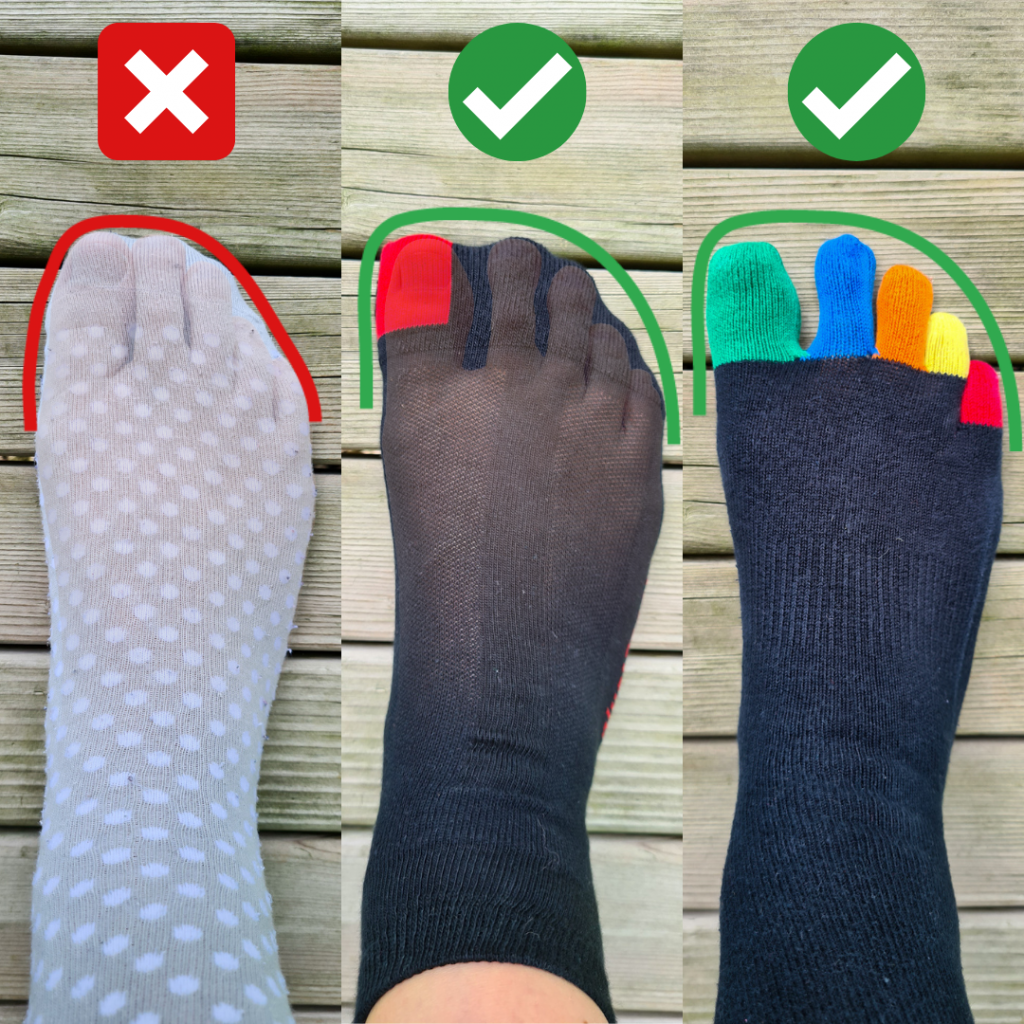It’s easy to get confused when shopping barefoot shoes, and once you discover how many choices are out there, it can be overwhelming. This guide will walk you through many important things you need to look at before buying your first pair of barefoot shoes so that you can make an informed decision.
The Barefoot Universe page is designed as a small guide to the world of barefoot shoes. Here you will find guides to guide you through the appropriate purchase of barefoot footwear and teach you how to identify the right model for you, list of barefoot shoe brands and detailed reviews of the models I have tested.
In case you skipped the article ‘What are barefoot shoes?‘ and you are not familiar with this footwear, check this post.
You can’t buy barefoot shoes on my Bose Nogice page, but you can find links to all the barefoot shoe retailers and links to the official brand pages (some brands can’t be bought from local retailers, only from the official site).
How do I start?
If you haven’t been paying much attention to your feet, I assure you that will change now 🙂 Because our feet are extremely varied and their shape, length, width and volume have a key influence on the choice of the right shoe model.
As you will see below, barefoot shoes are not chosen in the same way as traditional shoes. If you have been used to choosing footwear based on your “normal shoe size”, which you bought regardless of the brand, shape and purpose of the shoe, it’s a completely different story here.
Barefoot shoes are not chosen by ‘usual’ shoe size, but always on the basis of the measured length and width of the foot, which is compared with the values in the size charts for the specific brand.
Common beginner mistakes when buying barefoot shoes are buying shoes that are too narrow and too short, combined with switching to barefoot shoes too quickly. By following the recommendations on my site, you will be able to successfully avoid these mistakes.
1. Know your feet

Although barefoot shoe manufacturers try hard to make models that fit as wide a range of people as possible, not all barefoot shoes are suitable for all foot widths and shapes. What fits your friend may not necessarily fit you.
To help you identify your foot type, I’ve put together a very detailed guide called ‘What is my foot type?‘
2. Measure your foot

Always measure your feet before ordering shoes. Have someone close to you help you take the measurements. Manufacturers use different ways of measuring shoes (there is no standardised method), but usually the internal length and width of the shoe are given in the size charts.
You can find out more about measuring your feet in the ‘Guide for measuring feet and barefoot shoes‘
3. Find a model that suits you

There are many brands offering barefoot footwear, as well as many designs, colours, materials, etc., and our tastes and preferences vary. Browse the shoe lists to see which models/brands are visually close to you and which you would like to try.

Use the descriptions available in the shoe lists and the detailed reviews of each model to help you determine which model is right for your foot type. Unfortunately, it is not always possible that the models that are closest to you visually will also fit you.
To start, I recommend choosing a shoe model that you wear most of the time (maybe sneakers or, in summer, sports sandals?) and gradually adding more barefoot models to your wardrobe. Don’t be too hasty to buy several pairs, as your feet may expand or you may get confused about the right amount of space in front of your toes.
Need a thicker-soled model for transition to barefoot footwear? In this post you will find all the information you need on how to make the transition to barefoot footwear and which footwear is suitable for the transition.
4. Choosing the right size
As mentioned in the introduction, barefoot shoes are not sized according to our ‘normal shoe size’, but always by comparing the length and width of the foot with the values of the internal lengths and widths of the shoe in the manufacturer’s chart.
Sizes may vary between brands, so you won’t necessarily have the same shoe size in all brands.
Sizes may also vary between models. Although I wear a size 42 for most brands, this is not the case for all my shoes (I also wear sizes 41, 43 and 44 with a similar internal length).

4.1 Appropriate shoe length
The amount of space in front of the toes recommended by scientific studies (12 mm) is a daunting figure for many people at first.
You’re probably wondering, why do I need so much space?
Feet that have become “accustomed” to this lack of space through years of squeezing into too-short, cramped shoes may initially find this space superfluous. But a functional foot needs space to move and very quickly gets used to freedom again.
Many people make the rookie mistake of buying shoes that are too short and then quickly find out that they are too small.

Of course, the amount of space needed in front of your toes also depends on the type of footwear (winter models, sandals), your age (children also need space to grow) and how well the shape of the shoe mimics the shape of the foot, but it should always be a benchmark for you to have a few mm of space in front of your toes, even when you are squatting and walking.
Bear in mind that a non-functional foot may also have a problem with proper pronation/supination, so you may not achieve full extension of the foot at the start.
You can read more about this in ‘How much space do we need in shoes?‘
4.2 Appropriate shoe width
Usually, in addition to the internal lengths of the shoe, the size charts also give the internal widths of the shoe. There is no research yet on the appropriate width, but there is an unwritten rule that a shoe should be about 2-4 mm wider than the measured width of the foot. Choose shoes that are wide enough to allow all the toes in the shoe to spread properly when walking.
Due to the many factors that influence the feeling of the width inside the shoe (volume of the shoe and foot, design of the sole, materials used, etc.) and the different measuring techniques (measuring horizontally, diagonally or at different points), the value recorded in the size chart is not necessarily always fixed and unchanging. Different foot volumes therefore have different available widths in the shoe (width can only be described by a measurement in two-dimensional space, whereas our foot is three-dimensional).
Measurements always refer to the measurements between the joints of the first and last metatarsal bones, but remember that a healthy, functional foot is always widest across the toes, and that’s where our shoe should be widest too! Proper toebox shape is therefore of utmost importance!

When determining whether the width of the shoe is appropriate, always check that the toes are able to get into their natural position inside the shoe too. In the case of major foot deformities, you need to allow the toes to re-align and widen, so there may be more space at the sides to begin with (but that doesn’t mean you can choose a narrower model for yourself).
In extra soft models, make sure the foot does not hang over the sole. Also always bear in mind that wearing barefoot shoes for longer periods of time will cause the toes to spread and the foot to widen (depending on how much the foot has been compressed/deformed).
More on this you can find in this post.
5. Buying shoes
Although the range and number of shops offering barefoot footwear has increased enormously in recent years, most purchases are still made online. For many people, the thought of buying shoes from an online shop is daunting. How do I know if a shoe will fit me if I can’t try them on?
I understand your dilemmas and I know that buying online (at least for the first time) is not such an easy task. One of the aims of my blog is to make your purchase easier by describing the shoe models, helping you to shortlist the models that will suit you and to identify the correct fit of the shoe.
Barefoot shoes can be bought in a variety of ways, which I will describe below.
5.1 Online purchase
Barefoot footwear is most often bought online. This way you have access to the full range, all models and sizes, and it is also the easiest way to compare prices and suitability of models for different foot types.
You can buy barefoot shoes from various retailers or directly from the brand’s official website.

Some brands sell only through retailers, others sell exclusively on their own. Most of them practice both.
Many people are concerned about the cost of returning shoes that don’t fit. If this is the case, I recommend paying with Paypal, which also offers free returns up to 12x a year.
5.2 Buying in a physical store
5.3 Buy used barefoot shoes
You’ve probably heard many times that second-hand shoes are not recommended as they can have a negative impact on your walking pattern. Barefoot shoes do not fall into this category, as they do not need to stretch and mould around the foot as narrow, non-barefoot shoes do, thanks to their proper shape and thin sole.

As barefoot shoes have not been stretched during wear, second-hand models can also be worn.
You can, for example, buy second-hand barefoot shoes in various barefoot Facebook groups or online and try them on at a more affordable price.
Always look for wear on the soles when buying, and buy shoes for children when they will be wearing them (their feet are still growing, and the winter boots you bought in the middle of summer may not be suitable for the winter when they will actually need them).
5. Check the fit
Trying barefoot shoes for the first time is always something special. The difference in toe space is noticeable, the feeling of a thin sole can be unusual (you feel barefoot or like you can feel every pebble), some people find they are “pulled back” (due to the body adjusting to an inappropriately elevated heel in conventional shoes).
Barefoot shoes certainly look visually different too. In particular, they are wider, which may feel strange at first. But I assure you, you’ll get used to the width and soon all your normal shoes will be unusually narrow and tight.

When trying on a barefoot shoe, it is important to find out if it is suitable for your foot. In particular, look for the correct width, length and fixation of the shoe.
Not all barefoot models are suitable for all foot widths and shapes. Remember that even the narrowest barefoot shoe will be wider than your normal shoes, but that doesn’t mean it’s wide enough for you, although it certainly works more comfortably than the footwear you were wearing before.
Here are some tips to help you:
- Check if the shoe is the right width – are the toes able to spread naturally in the shoe? If this is not possible, choose a wider model. If you have trouble checking the right width, use toespacers to help you get your toes in the right position.
- Check the space in front of the toes – there should be enough space in front of the toes to allow the foot to stretch and expand properly when walking (your toes should not touch the end of the shoe). The recommended value for closed shoes is approx. 12 mm. Please also note that you will need more space if you wear thicker socks in the shoe.
- Check the fit around the ankles, heels and instep – the shoe must be properly fixed to the foot. Your heel should not be sliding out of the shoe when you walk, as this creates a wrong gait pattern. Pay particular attention to the fit in Chelsea boots and slip-on models. Do not compensate by having less space in front of the toes to keep your shoes on.
- Try shoes in the afternoon – foot volume can change during the day, so try shoes in the afternoon if possible.
- Walk in shoes – try walking around your flat in shoes. Walking in shoes should feel as natural as when you walk barefoot
- A child’s foot is growing constantly – with kids, measure their feet regularly and check the amount of space in front of their toes. Always choose a size that also takes into account the space for growth.
Please also note that over time, your foot may also widen and lengthen in barefoot shoes (depending on how compressed they were before).
Want more?
It is difficult to summarise all the information about barefoot shoes in one post, so I recommend you to read all the other useful posts on my blog.

Socks are a topic we don’t often think about. But just like shoes, they have an important impact on the functionality of the foot. For more information, see the post ‘Socks that don’t squeeze your toes‘.

Sandals are a special category of barefoot footwear and needed their own guide to guide you through the appropriate choice of model. Read more in ‘Beginners Guide for buying Barefoot Sandals‘






Hi! Excuse me, what is the brand of the shoe shown on the main picture of this post? It’s a blue/yellow shoe on the bottom row farthest left.? Thank you!
Hi Anie, they are Sambas The Bambas. You can find our review here: https://barefootuniverse.com/sambas-de-bambas-brand-review/
Hello!
Thank you very much for your very useful site!
I’d like to know contraindications for barefoot. Particularly interested in flat feet. How about this case ?
Thank you in advance!
Hi Archi,
Thank you for your kind words about our site—we’re thrilled to hear that you find it useful!
While we can’t provide medical advice, we can offer general information. Generally, wearing barefoot shoes, even with flat feet, can be suitable as long as there is no pain, dysfunction, or underlying pathologies. It’s important to note that individual experiences may vary, and it’s always advisable to consult with a healthcare professional for personalized advice regarding your specific case.
If you have any concerns or pre-existing conditions, it’s best to seek guidance from a medical professional who can assess your unique situation and provide recommendations tailored to your needs.
Thank you for understanding, and feel free to reach out if you have any more questions!